Happy New Year from the Old One(s)
For reasons not completely clear to myself, I’ve watched the eight episodes of Guillermo del Toro’s Cabinet of Curiosities in the past days, and in my infinite wisdom I have chosen to review it, thus making 2023’s very first sporadication a movie review. Who would have thought.
I went into all of it blind (in fact, I had decided to watch them purely on seeing the thumbnail when opening Netflix), so I knew nothing about the concept except what Guillermo Himself told me at the beginning of E01, and nothing about the contributors except what was told in the credit sequences at the beginning. What I expected was an experience akin to reading a collection of horror short stories, and what I got was the following.
Content warnings: only extremely mild spoilers and no scary images.
E01: Lot 36.
Summary: US Army Veteran buys abandoned storage lots in an attempt to pay off his debts. But buying Lot 36, he gets more than he bargained for.
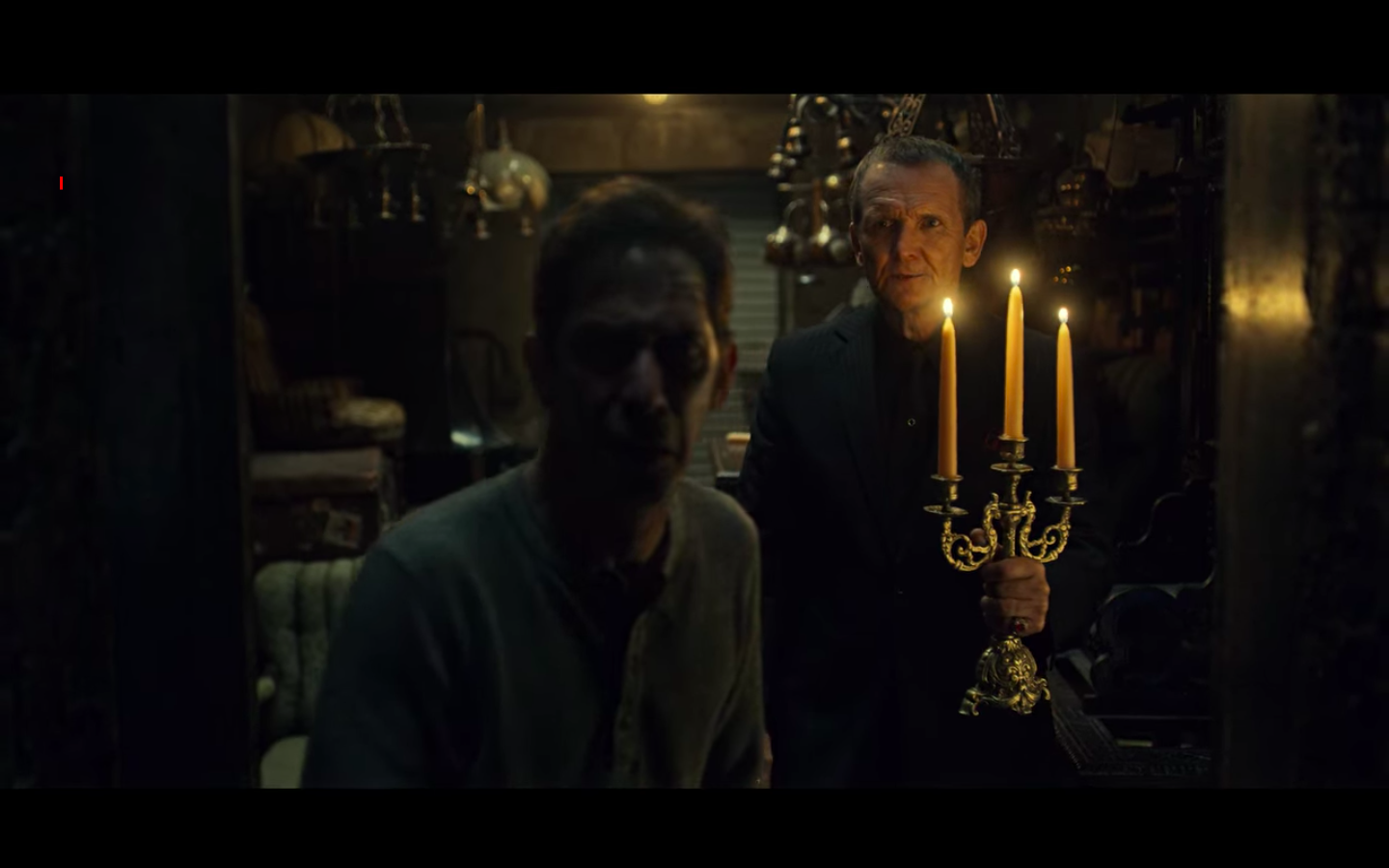
This one is between somewhere on the lower rungs of mediocrity and openly bad, I guess. Not very inventive in all aspects – the finale takes place at night, during heavy rain – most of it is somewhat wooden. I didn’t find it particularly scary, either. The location (the storage house, for the most part) is not bad. The cinematography is ok with moments of carefully dosed ingenuity. The horror designs channel a bit of (bad) The Exorcist first, then settle on some mixture of Lovecraft and Silent Hill (the game, not the films). Belongs to the punishment/revenge-sort of horror, which I don’t really care for: I have no qualms with the feeling of satisfaction a particular character of Lot 36 probably enjoys at the end, but the feeling of satisfaction the viewers are obviously meant to enjoy doesn’t sit right with me. The weirdest thing of all is the degree of context this episode seems to consider just the right amount for its 45-minutes-runtime: it takes place during the first Gulf War, which is probably meant to say something about the protagonist’s Veteran status, or maybe about masculinity and violence (everyone in the film but the two victims-turning-[kind of]-perpetrators is male), or maybe about the military industrial complex, I just have no idea what that ‘something’ might be. It just seems like there is no reason that this story takes place in the early 1990s. Similarly, the protagonist is a xenophobic asshole, and the former owners of Lot 36 were Nazis. The latter aspect is at least very obviously not meant to provide depth, which is a good thing (the let’s-include-the-holocaust-to-give-gravitas- to-our-story-move should be a punishable offense in the world of plotting), but there is also no hint as to whether it bears any structural relation to the far-right predilections of the protagonist. ‘Some Nazis insult the Hispanic cleaning lady, other Nazis force their daughter to become the earthly vessel of a demonic entity?’ Well, if you say so. Overall, the film has a bit of a Stephen King vibe to it; for example insofar as it is ostentatiously blue-collar-y, but with that collar being of a really, really, really bright blue (everyone’s a worker, nothing ever feels like labor); or how it is absolutely unable (though probably also unwilling) to let even the faintest whiff of subtlety persist; but also in how it is somewhat weirdly entertaining almost against itself.
Also in the episode: a smashed truck window, a laughable German accent, microwave food.
tl;dr: Three out of ten animal skulls just out of reach.
E02: Graveyard Rats
Summary: A grave robber encounters a rat problem in 19th-century New England.
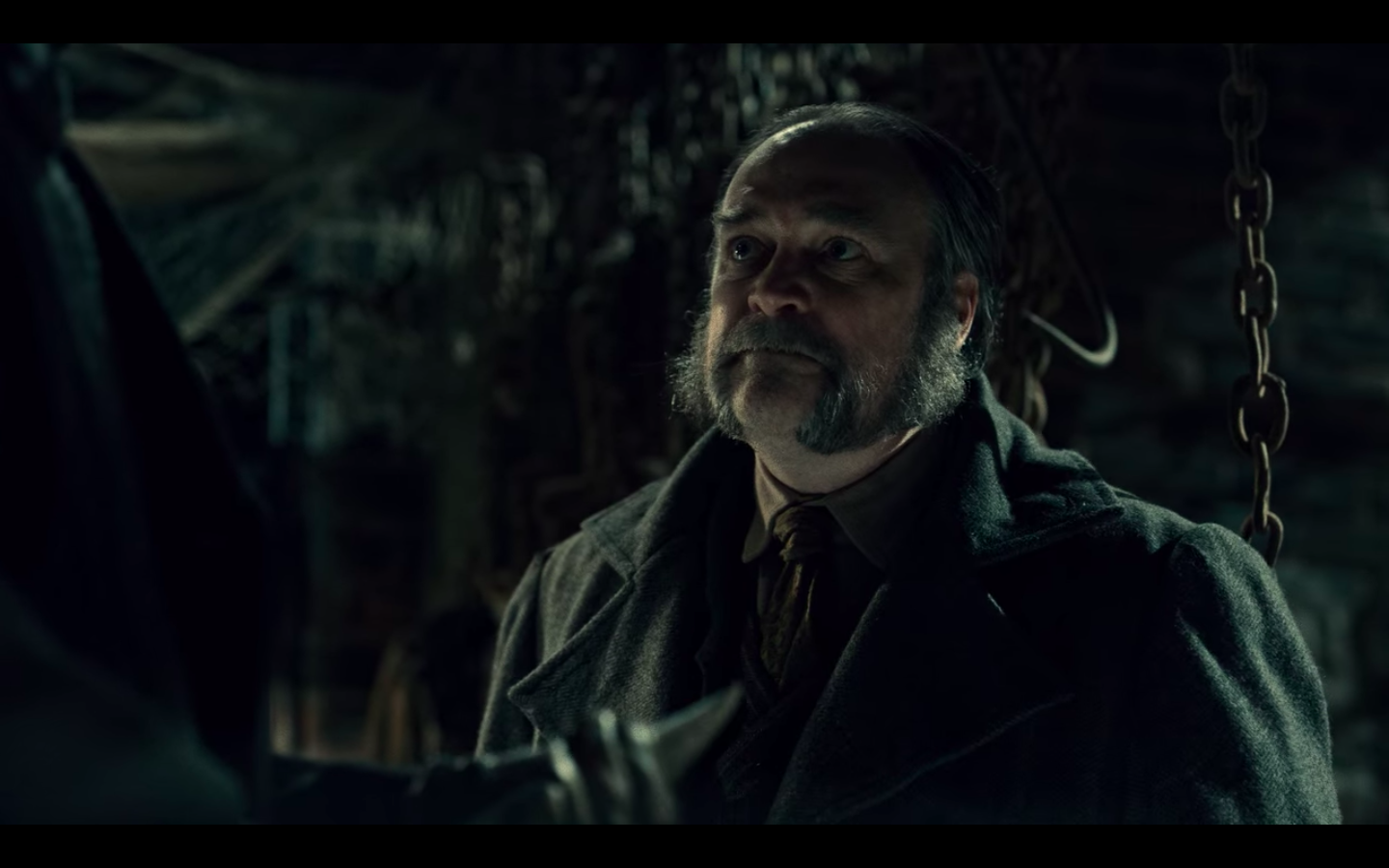
More notes from the punishment department! This time for gambling and grave-robbing. Horror’s conservative streak is alive and well. The episode starts off quite agreeably as a black comedy with some great casting decisions (the protagonist, the coroner’s assistant) and some bad ones (wtf is that fisherman, this isn’t called Graveyard Borats). Then, it devolves into a lengthy and profoundly boring subterranean pursuit sequence all the way to some ‘creepy’ underground chamber the likes of which we’ve seen about ten million times by now, in which the sequence is reversed and we get the same thing again although it wasn’t intriguing the first time around. The soundtrack is awful and the cinematography sucks. At least nothing is a metaphor. I’m here for some campy schlock if need be, but this ain’t it, chief.
Also in the episode: banging neighbors, a sabre, sideburns. tl;dr: One out of ten strange golden amulets.
E03: The Autopsy
Summary: In a miner’s town of 1970s Pennsylvania, an autopsy must shed light on what exactly happened during a strange and lethal occurrence in a mineshaft – and a set of crimes that seems to be connected to it.
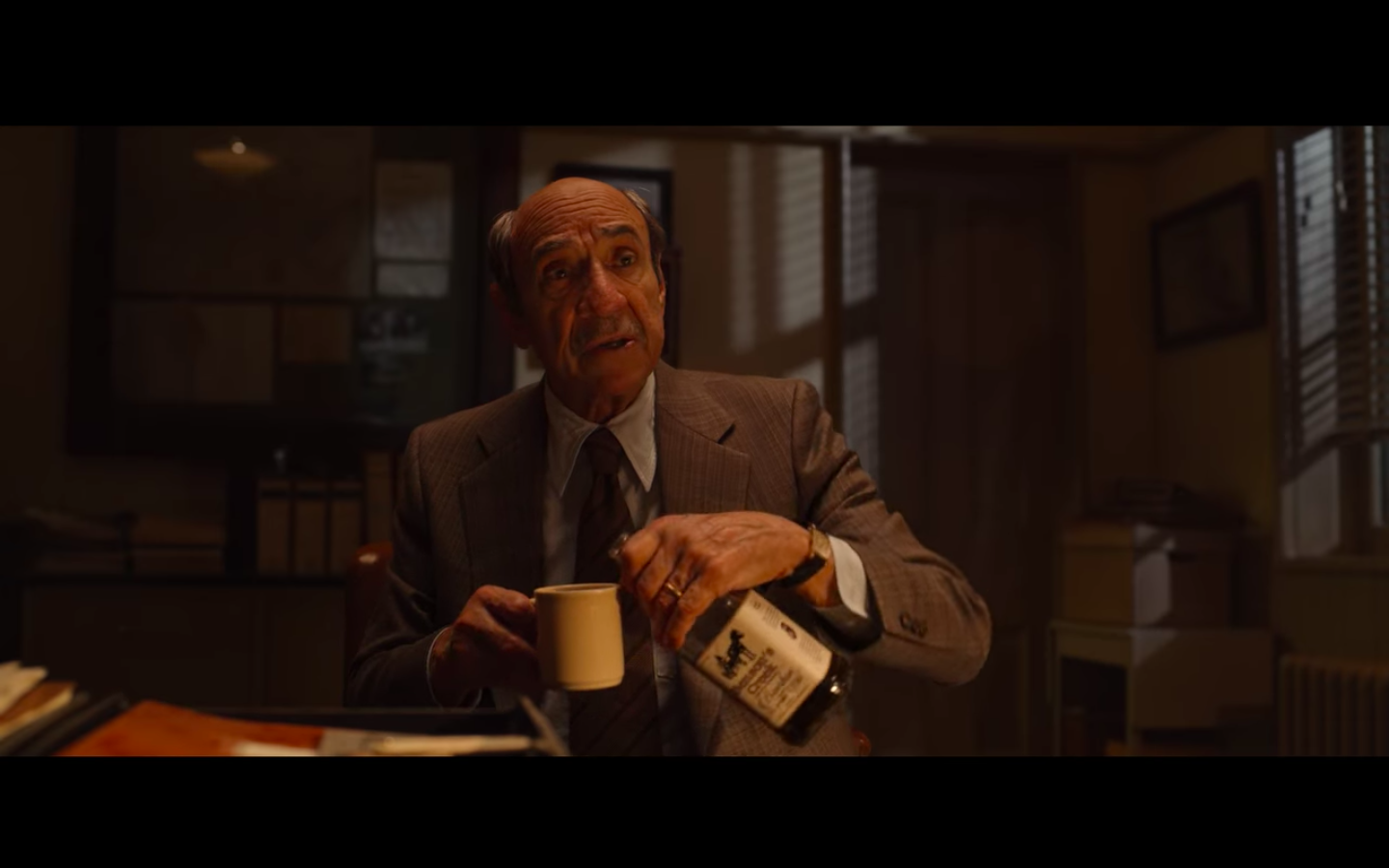
So this one goes out to those with the strong stomachs: part mystery-story of Twilight Zone characteristics, part post-midnight video nasty, this episode delivers the first, let’s say, half-idea, of the Cabinet. It is thoroughly unsettling; the acting is very, very good (there’s the heft of about twenty years lived in frustration in the way the sheriff-character says ‘useless’), and the writing not nearly as stiff as in the first two episodes. It is also fast at establishing a dense, fleshed out (no pun intended) atmosphere, and keeps the tension up throughout its runtime. I will say that the principal antagonist looks a bit like a, ahem, more conventionally attractive version of Twin Peaks’s Bob. The episode also has a close-up of a neck where the hair stands up, Eugenie Brinkema would be all sorts of angry (or fascinated). A lot of care has gone into the props, I suppose, everything looks rather realistic (as in: tangible). All those details: I like to see this sort of care in films, when everything looks the way it makes me think it should look like. The recording pedals, the sheriff’s uniform with just the right amount of worn-ness, the weight of the organs being placed on the medical scales, that sort of thing. The windows feel viewed through, if you get what I’m saying. There’s a pun somewhere in here about ‘spilling the guts’ with the amount of exposition the last ten minutes have to burp out between all the blood. Nothing makes a lot of sense; nothing is trying to make a point; just a well-crafted hour of nastiness, and a love letter to Alien, I think. Something comes dangerously close to a metaphor, but I’ll allow it. Why do people watch this stuff? Why do I watch it?
Also in the episode: meteor showers, the subtitle “[otherworldly warbling]”, hairy ball (just one)
tl;dr: Five out of ten coffee cups full of bourbon
E04: The Outside
Summary: A bullied oddball gambles on the transformative effects of a mysterious skin lotion.
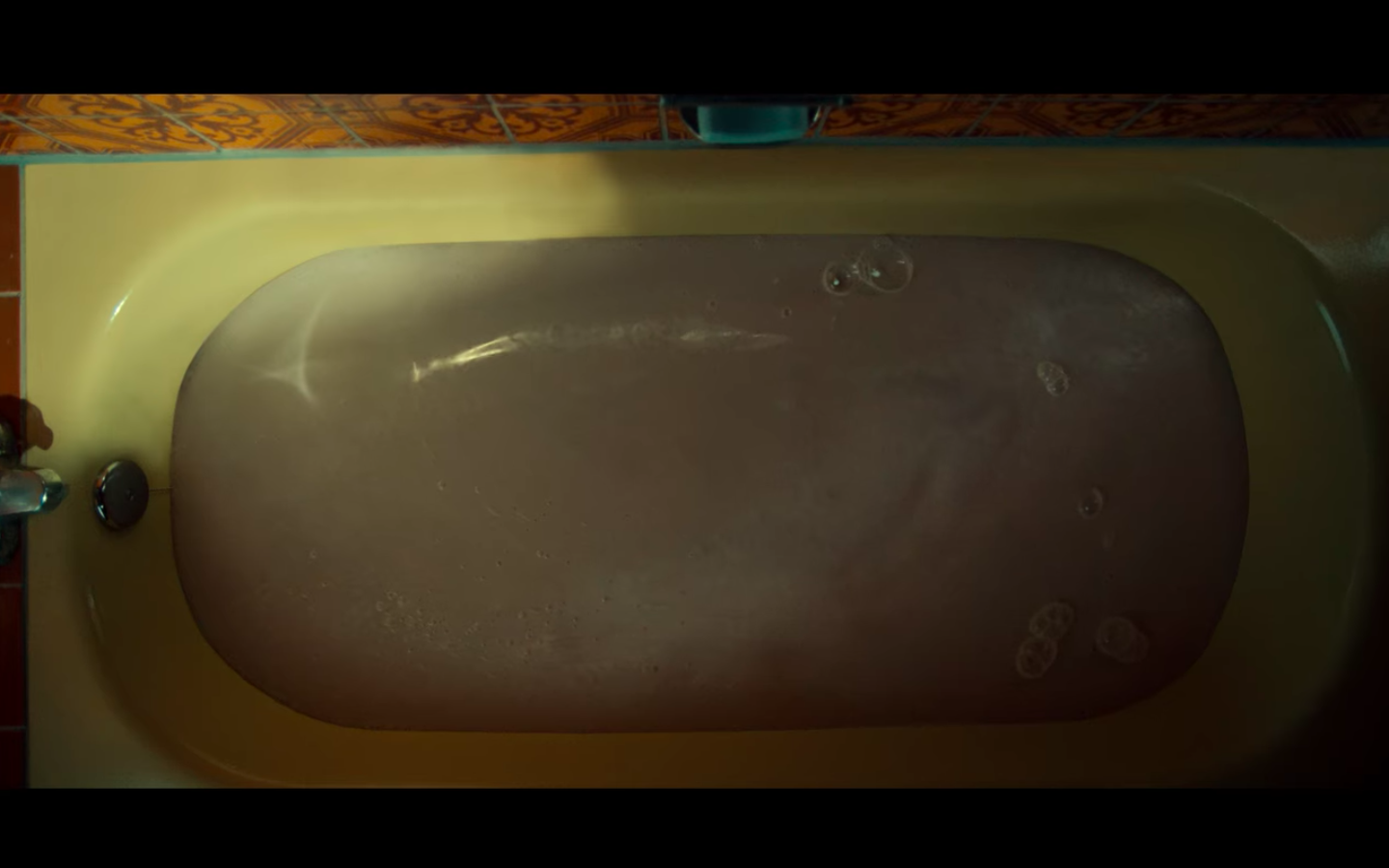
Holy shit: good writing! Where did that come from? One some level a body horror piece played straight, this episode is also a brilliant re-reading of late 1970s-to-1980s horror, bitingly funny in places and really, really touching in others – and it delivers the first actual idea of the series. The cast is great, the set pieces are glorious, the soundtrack inventive (and festive!) instead of the derivative stump-and-screech rehashes of the first three installments. The cinematography is not just ‘functional’. Various kinds of horror intersect, with body horror being the most prominent variant, but they are all adumbrations of the terror of the ‘beauty industry’ in a wider sense: the skin-tight machine of institutional, social, and spontaneous voices that tells people they’re insufficient. What’s new about The Outside is not the recognition that this is machine is cruel, but the specific look it takes at it, the nuances, threads, and jokes, it gets out of it, and what attention to detail it puts up to counterbalance its own more openly grotesque sides (such as who watches what kind of television at what times of day); finally, with what immediacy and directness it treats its topic, and with what ambivalence it leaves us. No close-up of autodestructing epidermis is as shattering as the cold layer of loneliness that seeps in and widens in the lead couple’s home; no tunnels as claustrophobic as the sense of helplessness closing in around them. His care goes nowhere: no matter how deep his love, her desperation is deeper. What is mad about her project, meanwhile, is not her own madness, and is not nearly as terrifying as the prospect that most about it might be perfectly reasonable. The physical violence hurts by how tender it is, Sarah Kane style. This is the kind of horror whose goal is not to shock by placing the meanest thing imaginable in a world we recognize, but to lead us into an absolute region of confusion, where doom and renewal are not yet deciphered.
Something looks like a metaphor, but isn’t.
Also in the episode: the surreal slim shady, the sentence “I know all about the huge”, a pig in a blanket.
tl;dr: Nine out of ten chicken wings
E05: Pickman’s Model
Summary: An art student’s grasp of reality is altered by the work of a fellow painter.
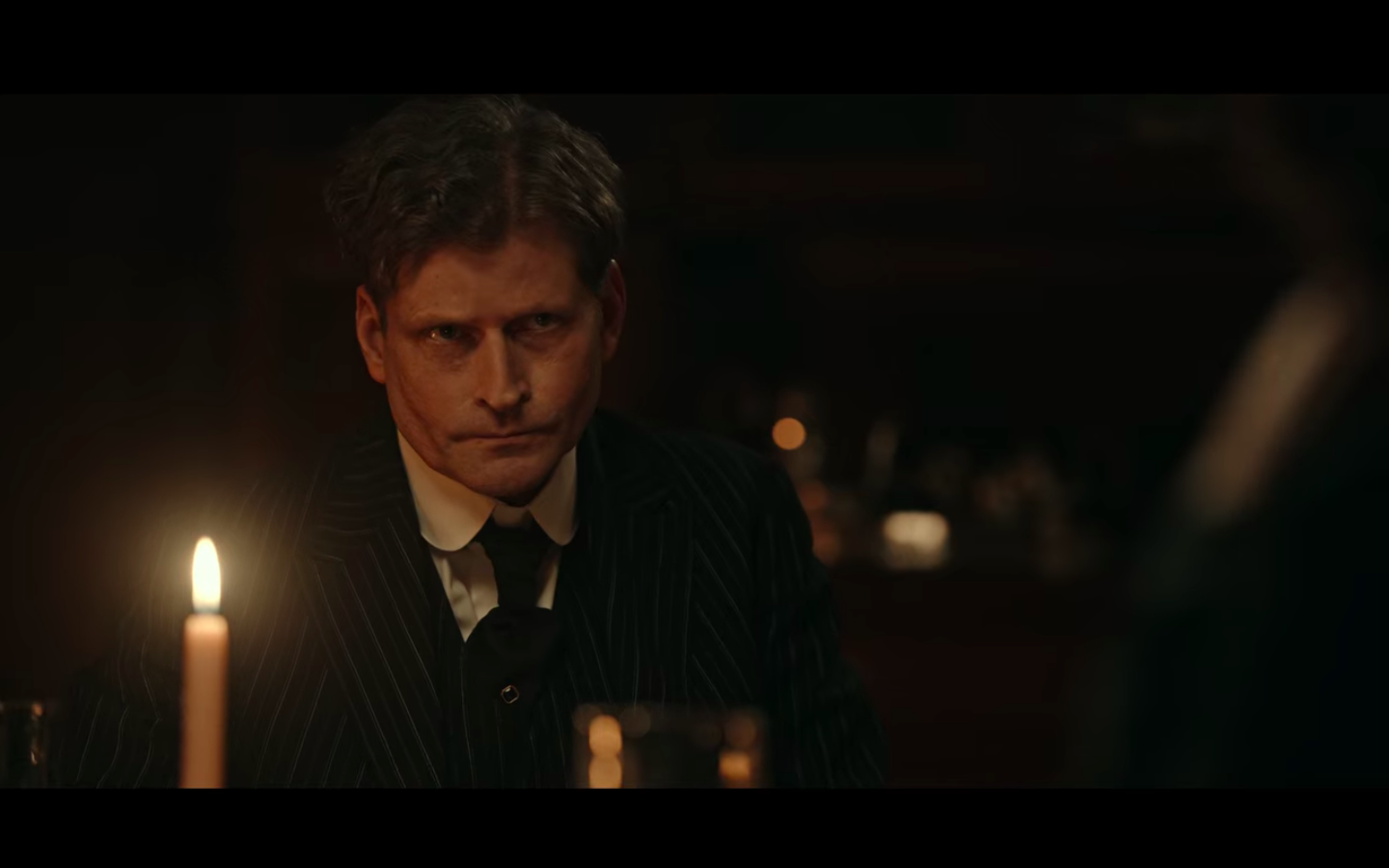
A Lovecraft adaptation! Why not! Well, there are a number of reasons why not, but none of them seem to have been considered. The cinematography is back to its functional interpretation, and the soundtrack back to violins that either swell or screech, depending on the emotion needed. In fact, everything about the episode does its job, but in a ‘quiet quitting’ kind of way. I would place Lovecraft’s original story in the upper-middle-section of his work, not a great story, but not a bad one either, chilling in some aspects, utterly conventional and pedestrian in others. Now, funnily enough, this adaptation chooses to change most, if not all of the original plot, only to transform it into something equally, arguably even more conventional. I have no idea why the people responsible thought this were a good idea. In fact, what remains of Lovecraft is the only redeeming factor about all of this. Some setpieces are ok. The cast is mediocre, but the guy playing Pickman – the artist of terror – obviously has a lot of fun and does his job somewhat well. Unable to get Lovecraft’s trademark eerie vibe across, the episode relies primarily on that cheapest of effects: the jump scare as constructed by the combination of sudden loud sound and sudden terrifying sight. Now, I don’t belong to the crowd who bash on the jump scare as such; I think it is a question of construction, somewhat like a joke and its punchline, and pretty much like this video describes. And the jump scares in this episode are badly constructed because just like everything else in it, they have no weight to them, there is no buildup, nothing, things just happen and some of them shock you out of your seat and others bore you back into it. On a bizarrely related note, the protagonist’s love interest (and future wife) looks absolutely unreal, by which I mean that she looks computer-generated. I have no idea how they managed that, and I don’t think it was intentional, but the effect is rather fascinating. Anyway, it makes her feel as bland and made of plastic as everything else. Two people gauge their eyes out at the end of the episode and I can’t say I blame them.
Also in the episode: an accent even more ridiculous than the “German” one in Lot 36, a wife who ‘just doesn’t understand’, bootleg Edvard Munch.
tl;dr: Two out of ten tables full of bad seafood
E06: Dreams in the Witch House
Summary: A spiritualist’s attempts to bring his twin sister back to the world of the living crosses the ambitions of a long dead witch.
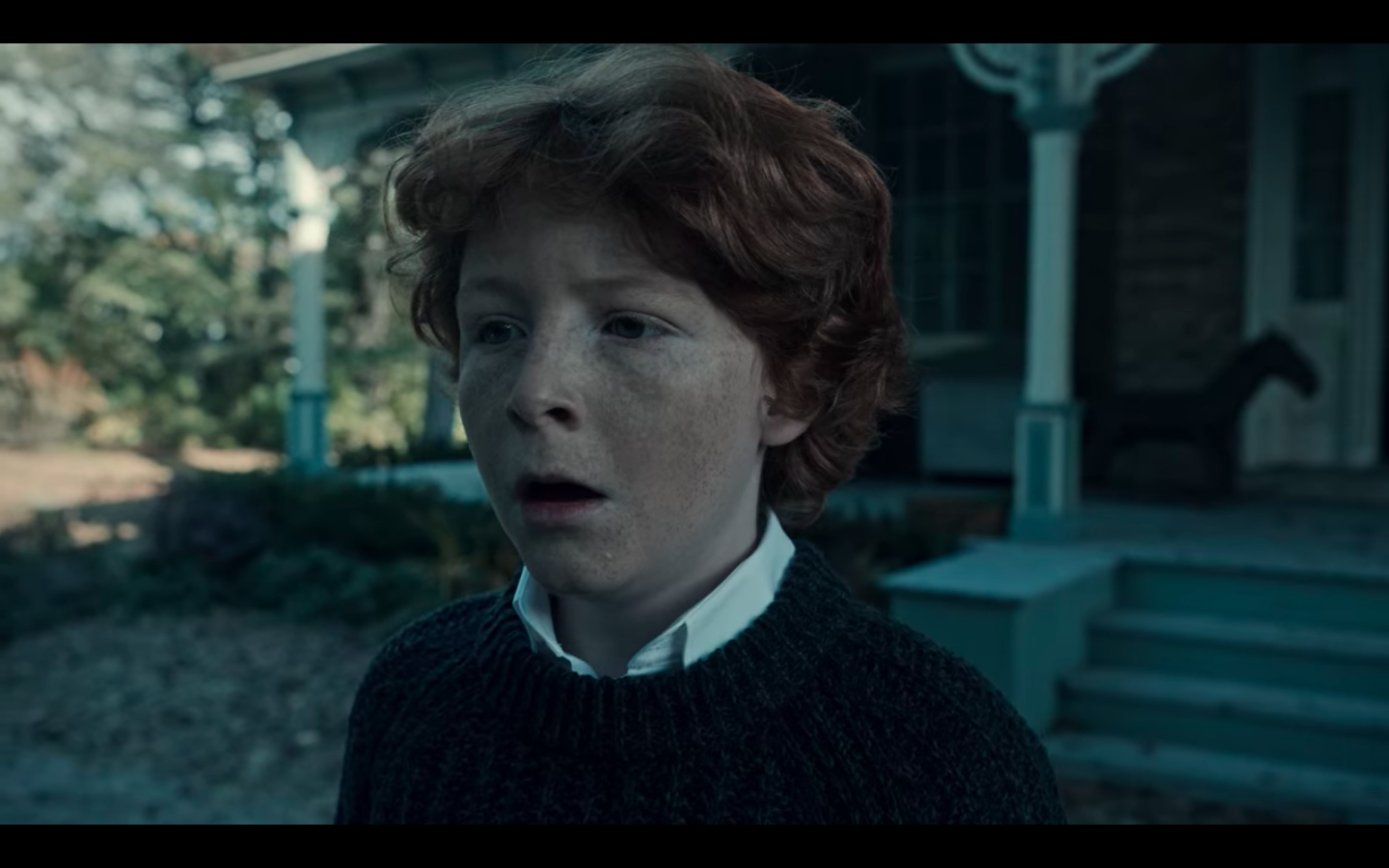
Another Lovecraft adaptation! Unlike the previous episode, this one foregoes the apparent rule that adapting Lovecraft means you’re not allowed to concede the existence of BIPOC. It also foregoes the idea of pacing (just how long is that middle act?? Alternatively: how many middle acts are there?). Again diverting from the source material, this adaptation turns the original short story into a meditation on grief first, in a mode that feels more like magical realism than like horror (although I’m not sure whether this distinction makes a lot of sense when thought through). In a further parallel to the previous episode, this adaptation, too, features a witch. The similarities really end here: Unlike the blood-drinking, jump-scare-loving Lavinia, who never goes beyond a bogus bogeywoman easily replaceable by a ghoul, a demon, a mummy, really whatever; Keziah is, although scary, also mysterious and intriguing, a spectacular being of blood and wood and geometry (whereas Lavinia is just ‘ugly woman’), and the episode proves immaculate taste by leaving her sidekick-character Brown Jenkin, surely one of Lovecraft’s best creations, intact (indeed, Jenkin is really funnily rendered; those gestures alone!). Keziah’s first arrival ‘in full flesh’ is the condensed version of how the two witches diverge: Lavinia is simply ‘always already there’ once the camera rudely throws itself at her and the soundtrack finds it within itself to add a loud noise; she’s in the world like a standing cardboard cutout and the camera approaches her slower or faster with a movement that lies only within the filmic apparatus, not in the witch, who is a mere tool to an effect. Keziah, on the other hand, appears as the camera is almost still (and as, indeed, the protagonist is unable to move, caught in some sort of night terror rigor), and appears with a bizarre, yet strangely beautiful, stiff, yet commanding and elegant movement, reminding me of the way the cellar ghost walks in Kiyoshi Kurosawa’s Pulse. Anyway: while the soundtrack is nothing to write home about, the cast is good, the setpieces are nice, the atmosphere is thick and rich. It’s intelligent without being heady, it’s entertaining, it’s creepy: what can I say? Maybe that it appeals to the theatre kid in me. Feels very 2000s-fantasy (features Rupert Grint to drive the point home). It’s just fun to watch. It ticks a lot of the right boxes while actually liking the boxes. It’s not ironical. It believes itself. Nothing is a metaphor. That pacing is really, really off though.
Also in this episode: ceiling wound, profanity nun, New England Alien.
tl;dr: Seven out of ten triangular paintings
E07: The Viewing
Summary: An eccentric billionaire invites four people to experience a nondescript ‘wondrous moment’/to see an equally nondescript ‘item’ in his mansion.

After a two-episode stint in the first half of the 20th century, we’re back in the (late) 1970s, 1979 to be exact, and the soundtrack has brought the synths to prove it. Speaking of synthesis, one of the characters looks like one of Bill Carradine and John Carpenter, but it is actually Peter Weller of RoboCop fame. Did I already mention this takes place in 1979? And wow does this feel like a short story. I know the others have (mostly) been adapted from short stories, too, but this really feels like one, and I don’t even know why or how. Because it’s mostly dialogue, maybe? Do I have a cheap idea of short stories? Bien entendu, I’m not saying this is a good or bad thing, just that it, yeah, feels like a short story. Yeah, feels: the episode is quite successful at establishing this kind of post-hippie, Vangelis mood (get together, you music producer, you astrophysicist, you novelist, you psychic, in this cybersyn-quoting living room pit, and design the future), a mood vaguely menacing, but only insofar as serious topics only ever reach a certain conversational water surface, dragging some darkness with them, but are then diluted and/or intensified in wholly other discourses; billboard slogans, zen koans, actions of dictators, emotions of dictators, dictator’s zodiac signs: what’s the difference, what’s in a life? Pass me that joint. Values dissolve like ice cubes: there’s something creepy about that, indeed. But that’s not the sort of creepy The Viewing is interested in. The Viewing is interested in extraterrestrials that make your head explode (did I already mention that this takes place in 1979?), and there’s nothing wrong about that. There’s a yellow Ferrari that has already appeared in The Outside, only in a different colour (red), and speaking of yellow, there’s more than a bit of good ol’ giallo influence to the whole thing. Believe me when I tell you this whole thing could have been made in Italy. There’s not only a textbook example of foreshadowing, there’s also an equally textbook example of Chekhov’s gun (it’s golden!). Beautiful. A case could be made that the episode is not horror, but Science Fiction, and that’s not only a good thing, but also rather typical for something made in 1979. But wait, this only takes place in 1979. Anyway. When Sofia Boutella tells you to take cocaine, you take cocaine. There’s no development. Nothing is a metaphor. Everything is vibe.
Also in this episode: “Daddy-o”, billionairesplaining, COPIOUS amounts of blow.
tl;dr: Seven out of ten ominous synth notes
E08: The Murmuring
Summary: Having recently lost their child, an ornithologist couple moves into a lakeside cottage to study the swarm movements of dunlins and finds the house to harbor strange occurrences.
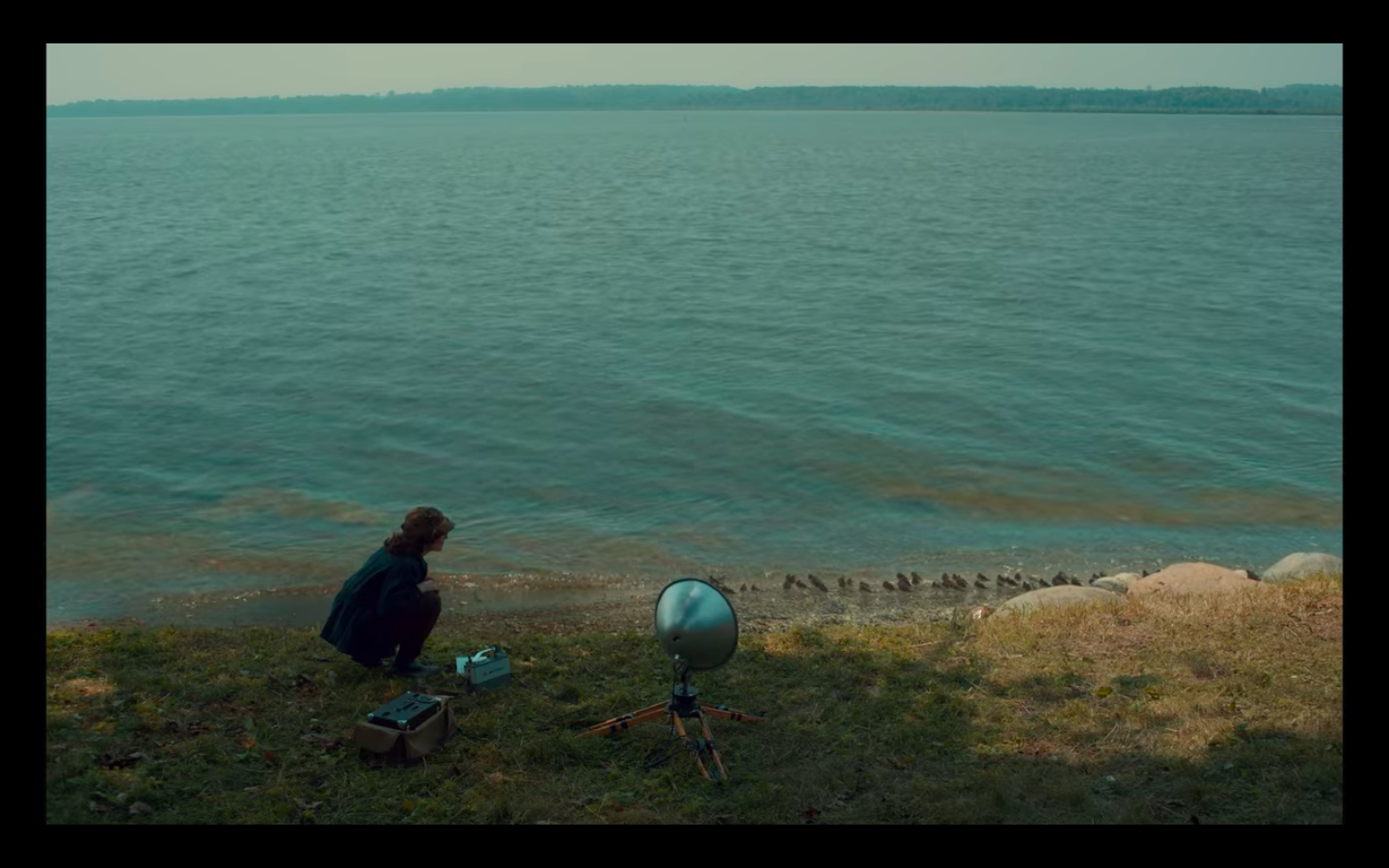
Well, I’m afraid something is a metaphor, so this is no longer my territory. No idea how to review.
tl;dr: Ten out of ten things that stand for zero
Don't expect me to sum this up. It is what it is, and there will be more like it. How's that for horror?